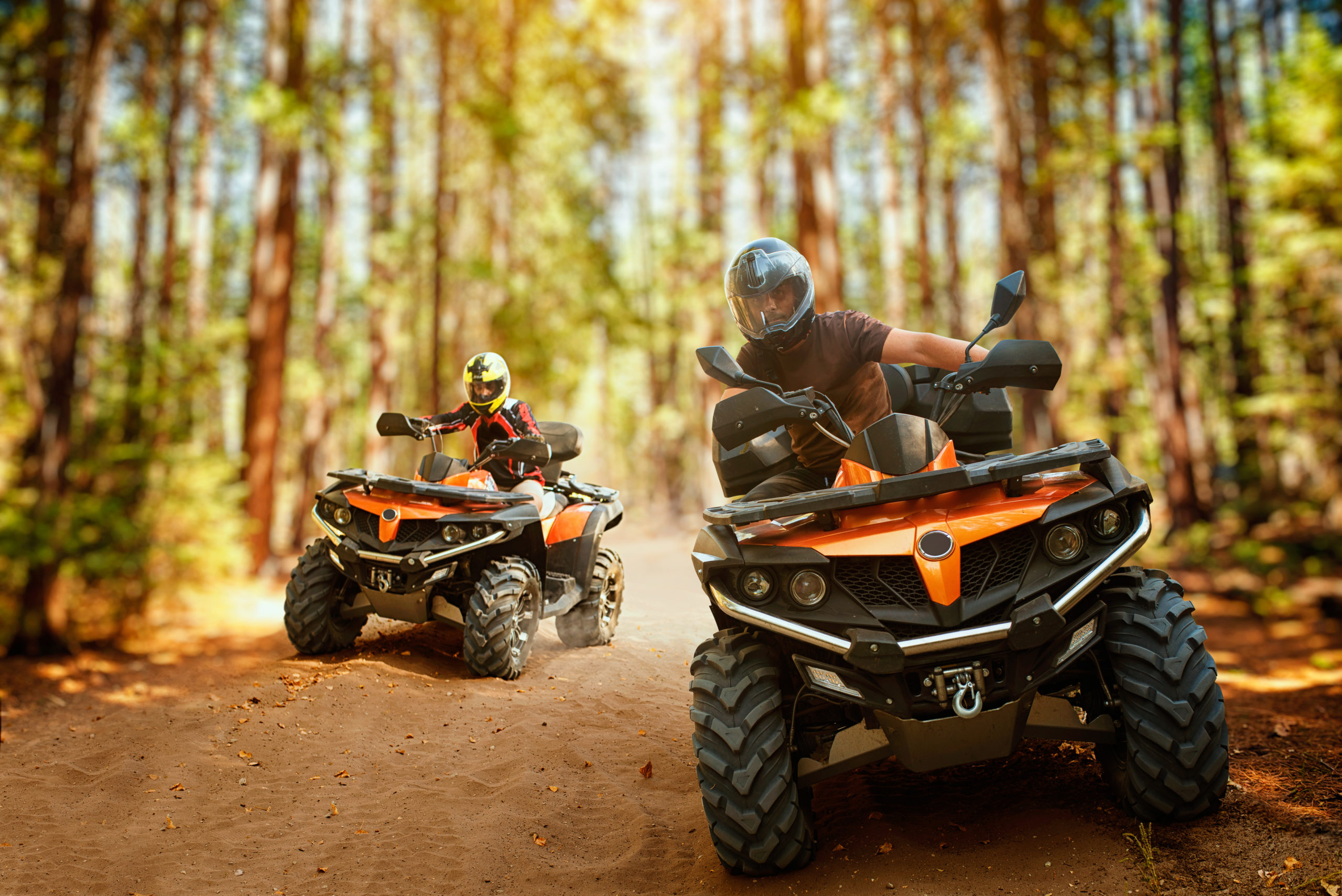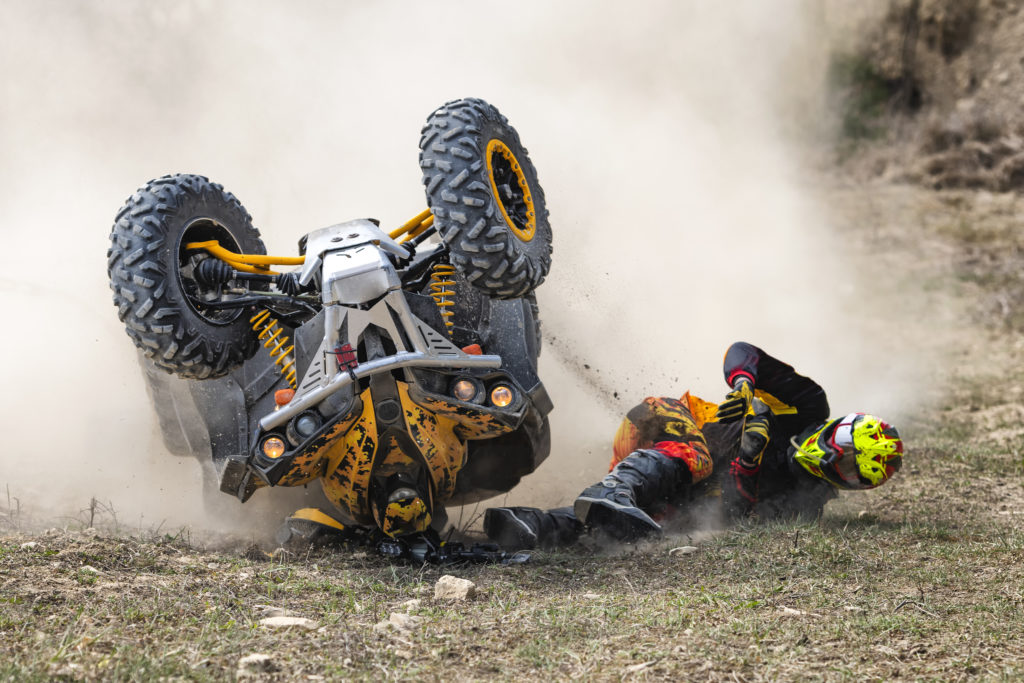The Basics of Off-Highway Vehicle (OHV) Insurance

If you’re one of many Albertans who enjoy off-highway vehicles (like ATVs and snowmobiles), you’re probably familiar with the two biggest risks: injury when you’re out riding and theft of your OHV. While preventing these events is preferable, it’s not always possible – accidents happen and criminals can be very determined. OHV insurance can help you cover the costs should the worst ensue.
What is OHV Insurance?
OHV insurance –commonly known as All-terrain vehicle (ATV) insurance – helps financially protect you if someone gets hurt or your vehicle is damaged. OHVs include:
All-terrain vehicles (ATVs) including light recreational, sport and utility
Off-road motorcycles (dirt bikes)
Utility Task Vehicles (side-by-sides)
Snowmobiles (deep snow performance, hybrid/crossover, trail, sport touring and utility)
You can purchase OHV insurance as a standalone or as an add-on to your other insurance coverage, depending on your insurer.
OHV Insurance Coverage
There are three main areas of protection provided by OHV insurance:
Physical Damage – Helps cover the repair or replacement of your OHV and its accessories if they’re damaged or stolen. For some vehicles, this includes mandatory direct compensation for property damage coverage, which covers repair costs if you’re not at fault or partially at fault in a collision.
Accident Benefits – Helps cover healthcare costs and loss of income if you’re hurt in a riding accident.
Third-Party Liability – Helps protect you if someone is injured while using your OHV or if you injure someone or damage property while you’re riding. This can cover medical and legal expenses.
Due to the danger of operating OHVs, accident benefits and third-party liability coverage are essential. If you or someone else is hurt when riding an OHV you own, it can result in serious injuries and even death. These coverages help cover medical costs and legal expenses if you’re sued. Otherwise, you could be forced to pay a large amount out of pocket if there is an accident.
Keep in mind that every policy is different. Your exact coverage will depend on your insurance company, the OHV you want to insure and your coverage options.
How much does OHV insurance cost?
The price of OHV insurance depends on several factors:
Your insurance and claims history
Your credit rating
The age, make, model and value of the OHV
How you use your OHV
Where you operate your OHV
Where you live (and store your OHV)
Your insurance options
Discounts are usually offered if you insure your OHV with the same insurance company as your home or car insurance. Some companies also offer discounts for security and safety features.
Do I really need OHV insurance?
Ask yourself if you can afford to replace your OHV, cover medical costs and the loss of income if you’re hurt while using it. Are you able to pay for legal expenses defending yourself in a lawsuit relating to damage or injury caused by your OHV? If the answer is no, then you should have OHV insurance.
Furthermore, the Government of Alberta requires OHVs to be insured if you’re riding them on public land. This includes crown land, roadways, ditches and public OHV areas. If you are not insured, you could face fines and your OHV could be confiscated.
The Risks of OHVs
While riding OHVs is lots of fun and gives you access to Alberta’s incredible nature, it isn’t without its risks. On average, 14 Albertans lose their lives to OHVs each year. Another 500 Albertans suffer serious injuries and 5,000 will need medical attention for injuries related to OHVs. According to AOHVA, rollovers are the most common cause of serious injury and can happen even on flat ground.

Aside from being a common cause of injury, OHVs are often targets of theft. They are frequently easy to steal, sell quickly and can be worth quite a bit of money. This makes them attractive targets.
OHVs can also suffer damage during operation or while they’re parked from wind, fire and other perils.
Do I need to wear a helmet?
If you operate your OHV on public land you are required to wear a helmet by law in Alberta. Because it’s legally required, your insurance company may not offer coverage if you’re riding without one.
In any case, it’s always a good idea to wear a helmet when riding your OHV. Head injuries are the leading cause of serious injury and death for OHV-related accidents and facial injuries are frequent.
What are the requirements for riding an OHV in Alberta?
If you’re riding on public land, your OHV must:
Be insured
Have a license plate
Have headlights and taillights
Have an approved muffler
You must also be wearing a helmet.
Safety Tips for OHVs
Follow these tips for riding safely on your OHV:
Wear proper safety gear:
An approved helmet.
Goggles (if your helmet is open).
Over-the-ankle boots with a heel.
Long-sleeved shirt and pants.
Sturdy gloves.
Inspect your OHV before you head out.
Only allow one person per OHV (unless they’re specifically designed for more than one person).
Stay on designated trails.
Never drink alcohol and operate an OHV.
Tell someone where you’re going and when you expect to get back.
Prevent OHV Theft
Keep your OHV safe from theft by storing it securely:
If parked at a campsite, use a chain to secure your OHV to a tree with the best lock you can afford. The harder it is to cut or drill through, the better.
If stored in a trailer, park the trailer so the doors are up against something and unopenable. Otherwise, invest in good locks and avoid leaving the trailer unhitched and unattended.
Get tire/brake locks or take the valve stems from the tires. This will make the tires go flat, making the vehicle difficult to move – just make sure you know how to inflate them again!
Ground anchors are another alternative to chain your OHV to when it’s not in use.
Store the OHV inside or under a tarp to keep the elements off it and keep it out of sight.
Invest in an alarm and security lighting to alert you to unwanted visitors.
Install a tracking device in your OHV.
We recommend writing down your OHV’s serial number and taking pictures of the vehicle at all angles. This can help recover the OHV if it is stolen.
If you’re selling an OHV, meet the interested party in a neutral location if possible – not your home or where you store your OHV. This can help prevent casing for a future theft.
Talk to an OHV Insurance Broker
If you have any questions about OHV insurance or want to get an OHV insurance quote a broker is your best bet to get competitive rates.







